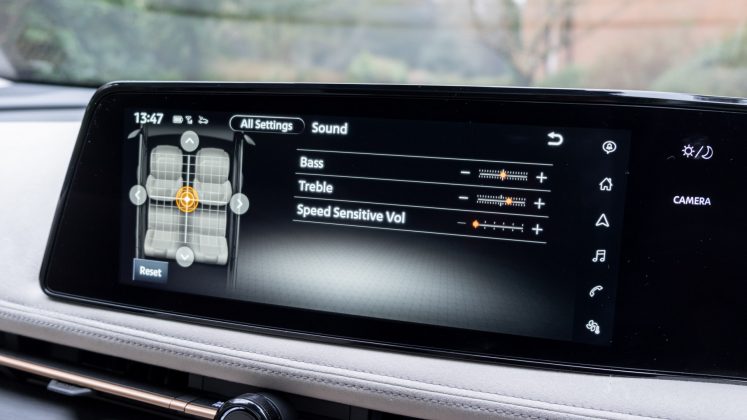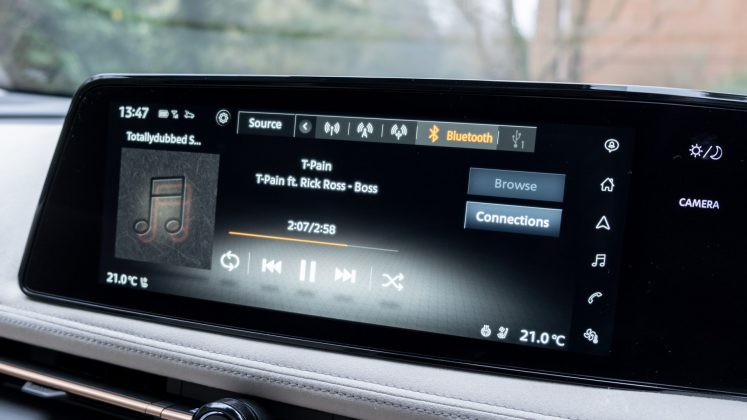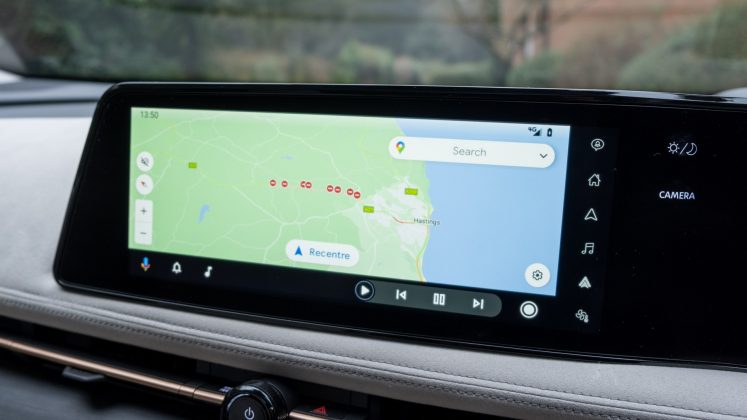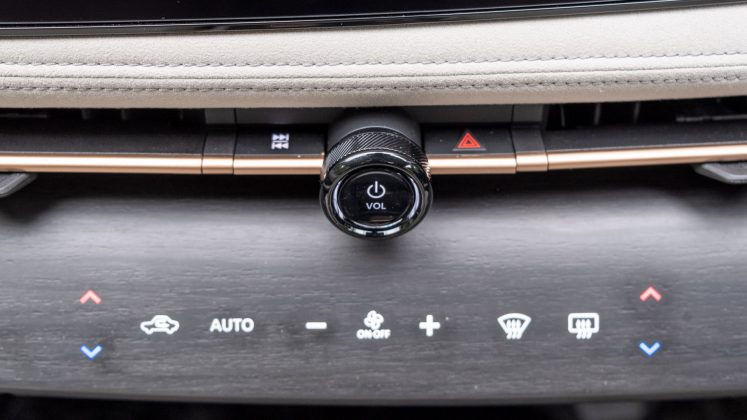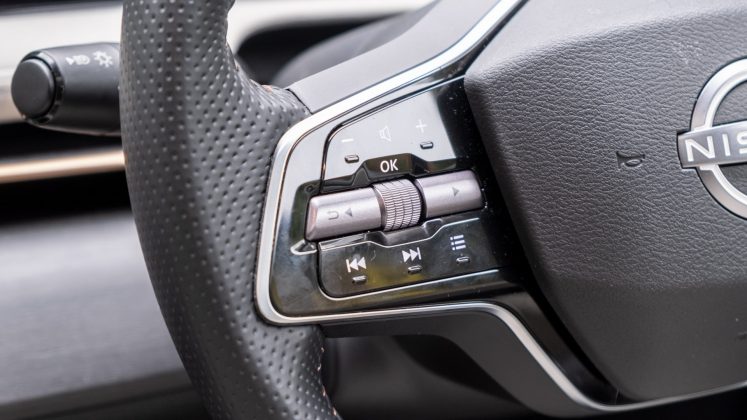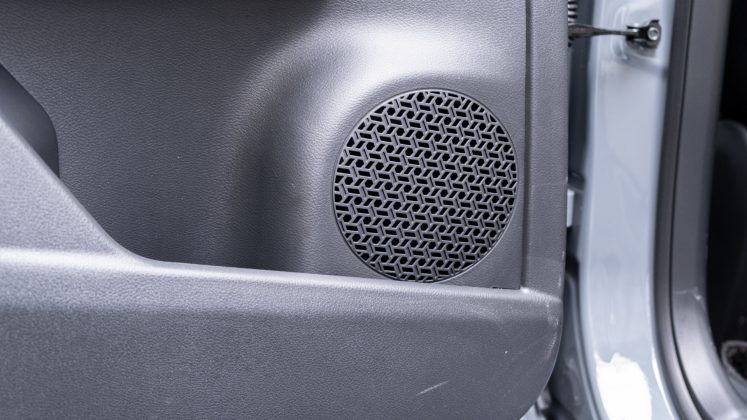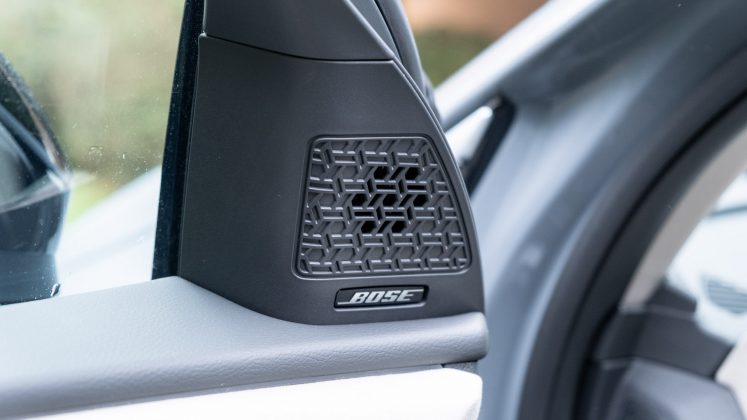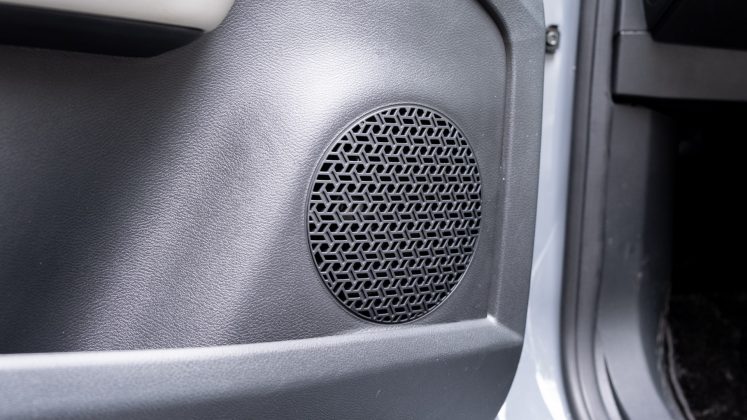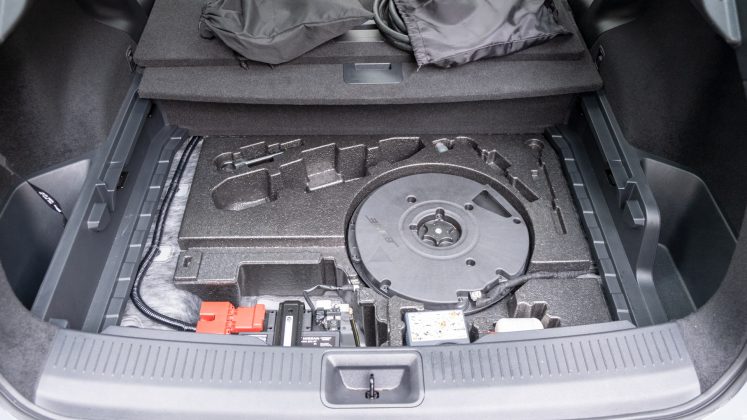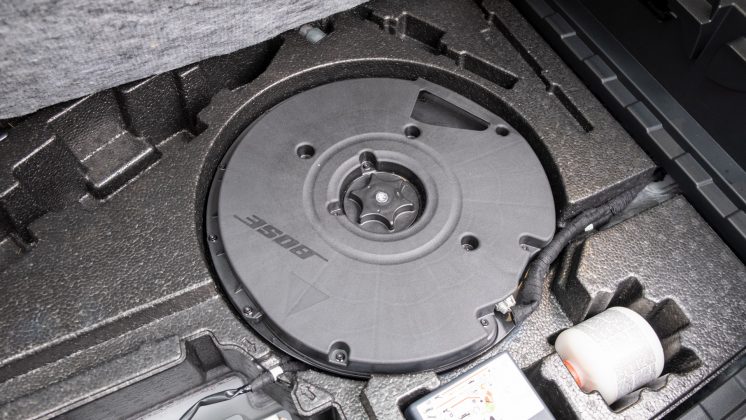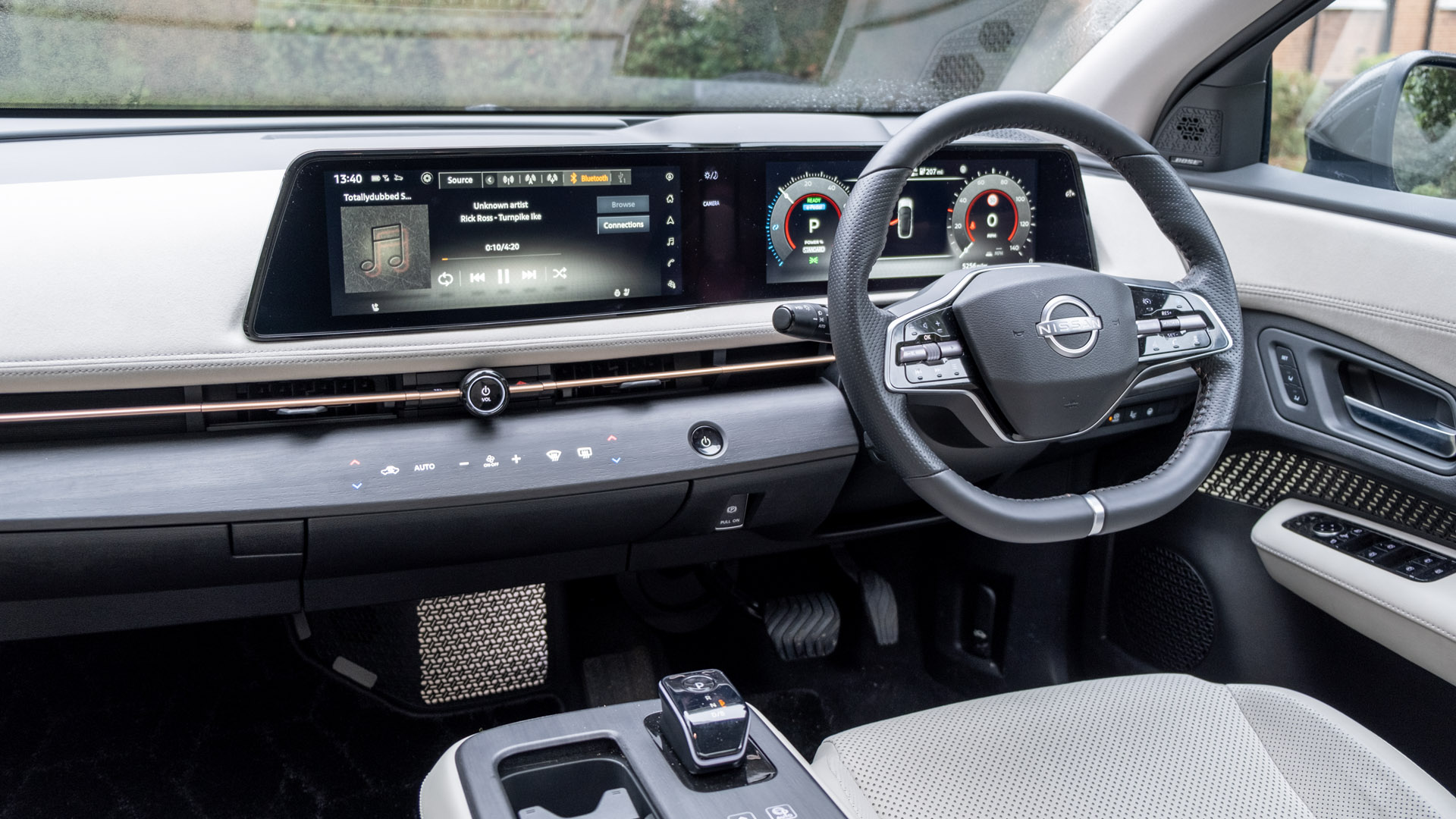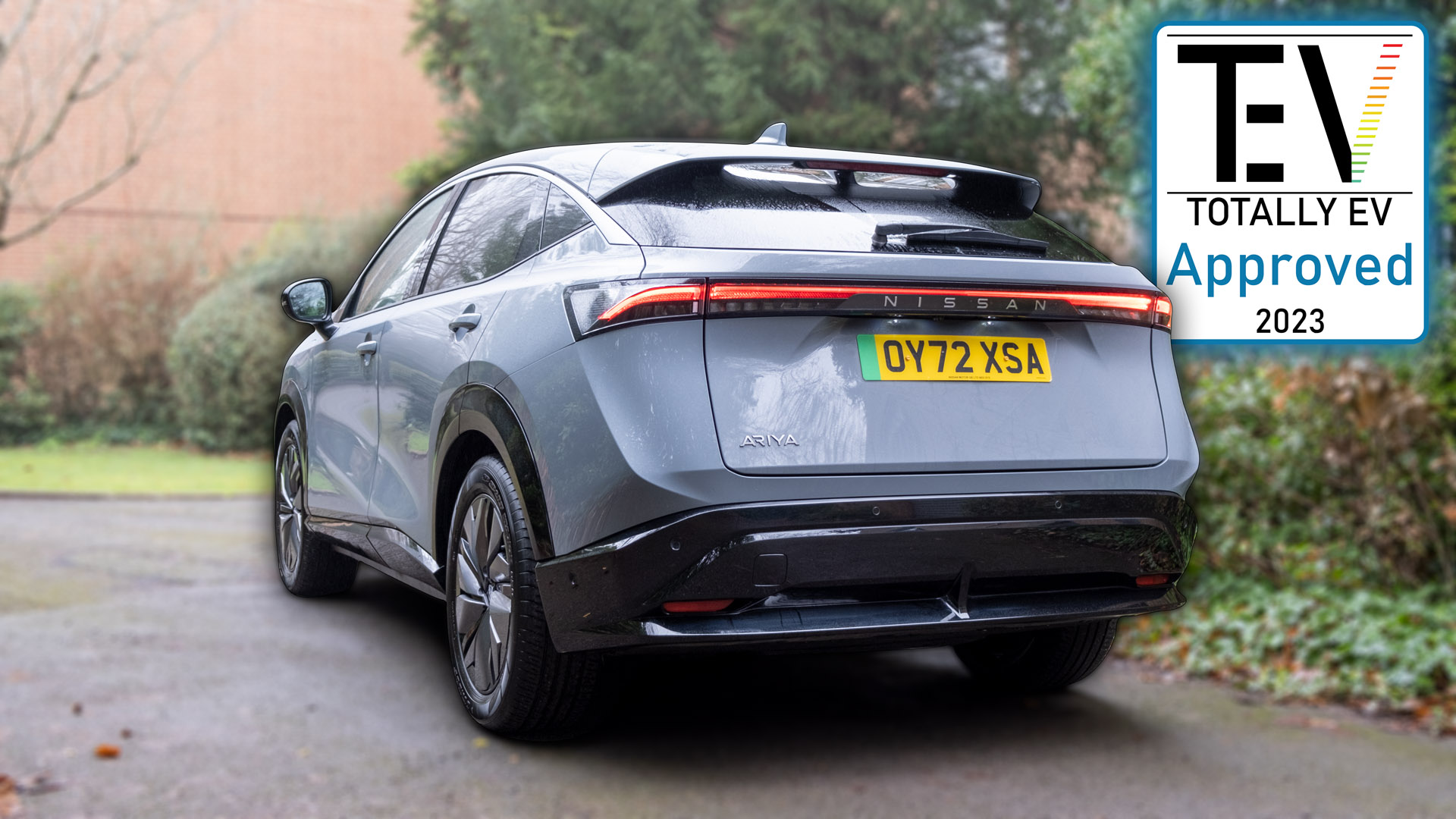The Nissan Ariya is a stylish all-electric SUV, which marks also the second consumer EV from the Japanese automaker. We found it to be a well-rounded vehicle, however, quite expensive given the driving range and performance on offer versus its rivals.
In terms of its audio configuration, the Ariya houses a six-speaker system in the Advance trims, while the top-spec Evolve trim that we have on review features a 10-speaker Bose system.
Click here to read the full Nissan Ariya review
Nissan Ariya audio setup
To tinker with the vehicle’s audio settings, you’ll have to navigate to the appropriate menu on the 12.3″ infotainment system – here are our optimal settings:
- Bass: +0
- Treble: +3
- Balance & Fader: Centre
In order to connect to the vehicle’s system, Apple CarPlay and Android Auto are both supported over a wired connection. The former system is also supported over a wireless connection. At the time of writing, however, Android Auto is only officially supported over a wired connection. Of course, Bluetooth is also an option with the SBC and AAC codecs supported – for the utmost sound quality, we’d always suggest plugging in your smartphone.
Moving onto media controls, they can be accessed through the 12.3″ display, via the volume and media controls found just below the screen and through physical buttons located on the steering wheel.
Read next: Kia Soul EV audio review: 10-speaker Harman Kardon system
Nissan Ariya audio performance
For a demo of the Nissan Ariya’s audio system head on over to our YouTube channel.
In terms of its audio configuration, the Advance models house two speakers at the rear and four at the front of the cabin. The Evolve trim bolsters the configuration to a total of 10 speakers, but to our count, there are 11 audio drivers. At the rear, it’s unchanged from the Advance trim, with a 5.25″ speaker positioned within each of the doors. Similarly, within the front doors, you’ll find a 6×9″ speaker and a 1″ tweeter towards the mirror triangle.
Then there are two speakers (four in total) comprised at each extremity of the dashboard – taking the tally up to ten. But, there’s also an Acoustimass Bass Box in the underfloor compartment of the boot, which means there are 11 speakers in total or 10+1.
The only logical explanation we have is that the two speakers at each extremity of the dashboard are considered as a singular unit, while the subwoofer has a 2-speaker configuration (identical to that of the X-Trail) – this would lead to eight speakers within the cabin and two within the boot.
Nissan and Bose have yet to provide us with details of the exact speaker configuration and total wattage; if and when we receive this information we’ll be sure to update this review.
The inclusion of a subwoofer in the Bose system certainly bolsters the vehicle’s sub-bass response. Indeed, songs that have a pronounced low-end rumble come to life; while, it’s not quite up there with more premium systems that offer an even better lower-end extension, it’s still a notable upgrade over the Advance system that omits a subwoofer altogether.
As for the mid-bass tones, they’re punchy. In ‘Me & U’ by Cassie the bass slams are pronounced and controlled. We found that the tuning of the low-end tones were perfect, with no adjustment needed to the ‘Bass’ EQ. Of course, this is quite subjective, so if you listen to non-bass-orientated music such as classical, you might want to scale it down by a few notches.
Read next: The best dash cams to mount inside your vehicle
However, the system’s warm sound signature does have an effect on the mid-range tones, namely the lower mids, which sound pushed back and recessed. Adding three notches to the ‘Treble’ EQ helps bolster the mid-range frequencies, however, due to a lack of dedicated controls can add an unwanted amount of sibilance and harshness at the top end.
Indeed, the highs have got a good amount of zing, namely at the front of the cabin due to the inclusion of dedicated tweeters within the doors and secondary audio drivers found within the dashboard. However, due to a lacklustre configuration at the rear of the cabin, those sitting at the back will miss out on that toe-tapping feeling.
Speaking of which, the overall soundstage reproduction is quite disappointing. The system has a uni-directional sound due to its speaker configuration; even for those sat at the front, there isn’t that degree of engagement and fulfilment as you’d find on vehicles from Tesla or even Kia.
Expanding on that point, it’s surprising not to see the ‘Bose Centerpoint‘ option available in the Nissan Ariya. While it isn’t present on the older Nissan Leaf, you will find it on newer vehicles such as the Honda Civic hybrid, which houses a 12-speaker Bose system. There are some pros and cons to using said technology but the added dynamism, width and depth, which is lacking on the Ariya, would have bolstered the overall experience.
Nonetheless, there’s good instrument separation that can be heard at the front of the cabin, which helps keep the front passengers excited when listening to more challenging tracks or live recordings.
Finally, onto cabin noise, the Ariya provides that trademark Japanese cabin experience, whereby noise is suppressed at all speeds. The vehicle’s cabin insulation is impressive, especially for a larger-sized EV. Using a sound meter, we recorded 36 dBA at a standstill; driving at 20mph, 52-56 dBA; driving at 30-40mph, 62-66 dBA; and at 70mph, 70-74 dBA.
Read next: Tesla Model Y audio review: An audiophile’s dream?
TotallyEV’s verdict on the Nissan Ariya’s audio system
On the whole, the Bose system comprised within the Nissan Ariya Evolve trims will provide consumers with better low-end prowess thanks to the inclusion of a subwoofer, and a more exciting sound due to extra audio drivers found at the front of the cabin. As such, the upgraded configuration receives TotallyEV’s Approved audio award.
Find the best Nissan Ariya deals
With that said, the Nissan Ariya’s audio systems can’t compete with some of the alternatives out there on the market, and it’s equally disappointing to only see a ‘Bass’ and ‘Treble’ EQ and not a multi-band EQ like some of its cheaper rivals. Thus, audiophiles might want to look elsewhere for bettered audio reproduction and customisation.
Would you upgrade to the Evolve trim for the upgraded Bose system? Let us know in the comments section below or via social media; we’re on: YouTube, Instagram, Facebook, Twitter and LinkedIn.

